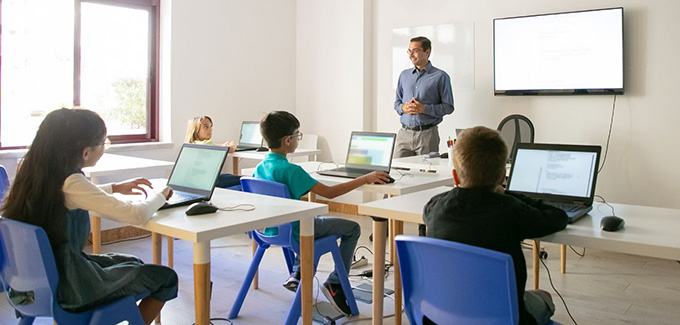
The presence of screens in our lives has been accompanied by multiple concerns about its possible effects, especially with regard to young people and children who grow up with them. At the same time, in educational centers efforts have been made to incorporate them and avoid missing the train of technological innovation.
Recent news about the political decisions adopted in some countries seem to make us understand that the use of technology in schools could be harmful and responsible for some cognitive problems that affect learning. But is it really so?
Fear of technology
Fears in the face of technological development are not new. Whenever a new technology has broken into people’s lives, there have been those who have feared its effects on our cognitive functions. Without going any further, Plato warned about the devastating effects that writing could have on people’s memory, by relying on it as an alternative to remembering information.
However, research suggests that people’s basic cognitive architecture does not change because the environment changes. Our mind continues to operate in the same way.
Distractions and Survival
Indeed, screens are very attractive to us because our brains have evolved in such a way that we are drawn to the promises of new information that may be relevant to our purposes. This proved essential for the survival of our species.
What has changed today with screens is the possibility of accessing this type of information at any time and place. This can make it seem like we have less ability to attend, when in reality what we have are more distractions .
Myopia epidemic
Technology has also been blamed for health problems such as myopia, which affects four out of five university students in Spain. However, nearsightedness is more of a public health problem related to lack of exposure to bright light and excessive close work than to the use of technology itself.
Carrying out outdoor activities reduces the incidence of childhood myopia, but the European regulations on indoor lighting establish levels of visual comfort that are too low. Do we take these aspects into account when designing schools and educational spaces?
Screens and children under three years
It has also been said that screens cause linguistic deficits in the little ones. However, this would be a simplification. What could really cause these deficits is the fact that we replace with screens (or anything else) the stimuli that babies need to develop language: interacting and talking with them, reading them stories, letting them listen to our conversations, etc.
Researchers agree that personal interactions are the best way to help children under the age of three develop their language skills . Therefore, any alternative that reduces the time spent interacting with them may jeopardize their development in this regard.
Adolescent mental health
Technologies are also blamed for mental health problems among young people. However, it seems that the lack of family support or school demotivation has a greater influence .
In this sense, the American Psychological Association indicates that, for example, the use of social networks is not intrinsically beneficial or harmful for adolescents and that their social circumstances are the ones that affect them the most.
An uneven digitization
The digital transformation process of schools in Spain is very uneven. Thus, we find centers in which it has barely started and others that have been working in this line for years. Digitization processes are also different in each country , with diversity and even a digital access gap in some.
In reality, the use of printed textbooks continues to be the majority in the Spanish education system, as reflected in the 736.67 million euros in turnover achieved in the 2021-2022 academic year. In Spain, school digitization has occurred mainly in administrative aspects and not so much didactic.
A wrong approach
In centers where technology has been incorporated into the classroom, it has often been approached from the wrong approach. For example, replacing printed textbooks with their digital equivalents to use them in the same way and with the same methodologies, something that does not provide any didactic value.
It is important that we know how to select the tools that provide added value and use them within the framework of methodological strategies that make sense. Otherwise, we will be fostering an empty innovation .
It is important, therefore, to have a critical stance towards the news that comes to us regarding the prohibition of technology in the classroom. In some cases, the information is misunderstood and disseminated and, as in the case of the recent UNESCO report, the institution itself has to come out and clarify that it is not talking about prohibiting all use of technology, but that it be used when supporting the teaching-learning process.
The real needs
In short, beyond an “anti-screen” position, we need to seek complex solutions to complex problems and address the real current needs, such as teacher training and better management of resources in education.
Technology must support educational processes , and to do so we need to regulate and educate young people in their use of technology.
It is essential to find effective solutions and consider how we put technology at the service of education (and not the other way around) and how we achieve a good digital literacy of our young people for an eminently technological world.
Author Bio: Maria del Mar Sanchez Vera is Professor of the Department of Didactics and School Organization. Member of the Educational Technology Research Group and Antonio Benito Galindo is Professor of Physics, area of Optics both at the University of Murcia